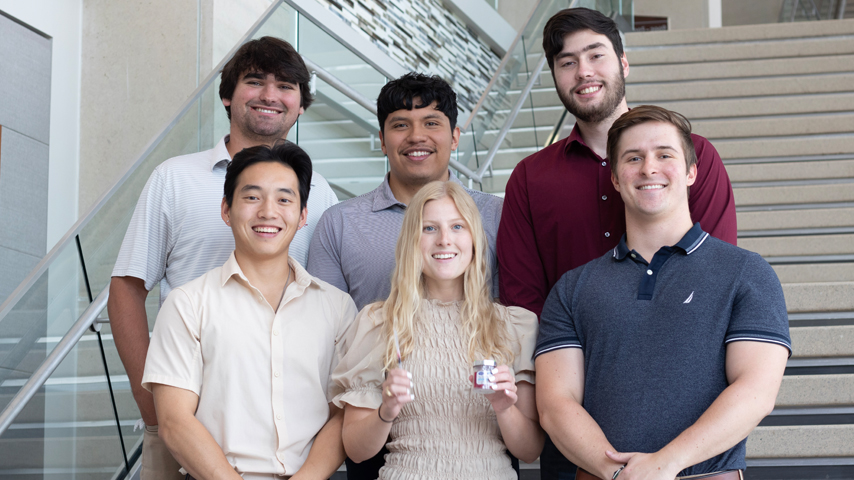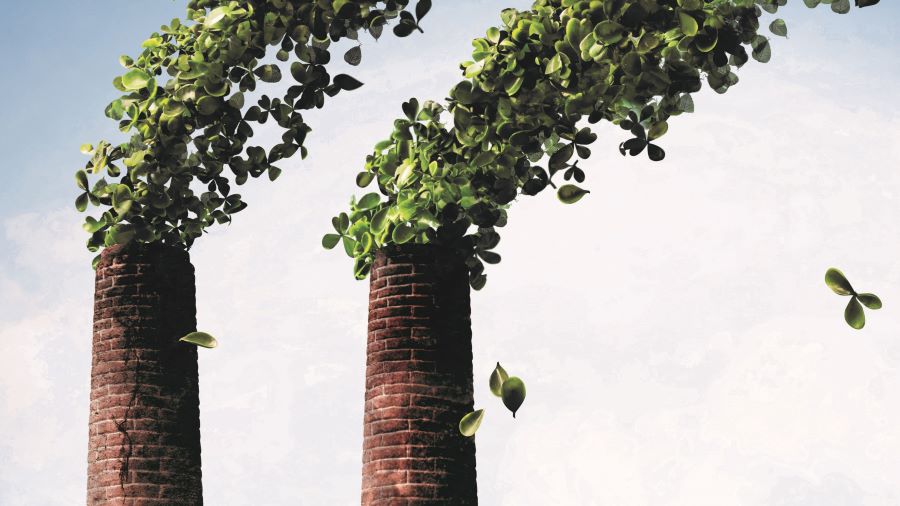Additive Manufacturing and Design Simulation Prototypes Showcased at Two ASME Challenges in Boston
Additive Manufacturing and Design Simulation Prototypes Showcased at Two ASME Challenges in Boston

Engineering students from around the globe put their ingenuity and design skills to the test during two competitions that were held earlier this month in Boston at the ASME 2015 International Design Engineering Technical Conferences & Computers and Information in Engineering Conference, and Additive Manufacturing + 3D Printing Conference (IDETC/CIE/AM3D) in Boston. Nearly 30 teams took part in the two events — the Innovative Additive Manufacturing 3D Challenge (IAM3D) and the Innovative Design Simulation Challenge (IDSC) — which were held on Aug. 2 at the Hynes Convention Center.
Sixteen teams faced off at the final round of IAM3D in Boston. The competition, now in its second year, offers mechanical and multi-disciplinary undergraduate students the opportunity to re-engineer existing products or create new designs that minimize energy consumption or improve energy efficiency. The winning entry in each category received a $2,000 award, while the runners up received a certificate. The faculty advisor of the winning entry received a $1,000 award and a complimentary five-year ASME membership.

A three-member team from Texas Tech University won the competition’s Best Overall Design Award with their entry, “The Low Temperature Salt-Water Desalinator.”Shaun Foreman and Taylor Cychowski presented two prototypes for thevacuum-driven water purification unit: a small version for hikers and campers and a larger model that could supply drinking water for a family of four. The runners up in the Best Overall Design category were Nico Lacroix, Dan Hughes and Javon Mayhew from the University of Prince Edward Island in Canada for their project, “Linear-to-Rotational Motion Mechanism,” a device designed to drive an electric generator by turning linear motion into rotational motion.
The IAM3D Best Innovative Design Award went to Scott Hill, Chas Davies and Nikola Tepavac of Tennessee Technological University for their entry, “Design of a Rapid Additively Manufactured Compliant Hand,” a life-size, flexible prosthetic hand that could be used either as an advanced robotic gripper or as an extension for improving mobility of a person with disabilities. South Dakota State University’s Joshua Hieb, Nicholas Heiman and Morgan Thomas were named runners up in the category for their project, “F.A.S.T Muffler,” a 3D printed muffler for high performance and corrosive weather applications.

The winner of the Best Re-engineered / Collaborative Production Award was the team from Sheridan College in Ontario, Canada, for its “Audible Hockey Puck.” Team members Ryan Vierira and Kristoffer Pascual worked with a group of visually impaired hockey players to design the device, which emits electronic sounds as it moves across the ice. Vaibhav Goyal and his teammate Rohit from Netaji Subhas Institute of Technology (NSIT), Delhi, India, were named runners up in the category for their “Customized Sprinkler for Optimized Irrigation,” a single-unit sprinkler head and pipe combined with multi-layer nozzle system that provides improved coverage for large and irregularly shaped farm fields.
A three-member team from the Temple University was honored with the Best Verbal Presentation Award for their entry, “Efficient Horizontal Axis Wind Turbine Blades.” Team members Alexander Benvenuto, Sarah McLeod, Joseph Fossity created a wing design, based on a whale fin, featuring serrations and a twisting shape that modifies airflow to improve lift. Raghavendra Surendra, Pratil Yerne and Anmol Dhandhania from Jain University in Bangalore, India, were named runners up for “Modular Based UAV Design by Biomimic of Eagle Flight at Low Speeds and Low Reynolds Numbers,” an unmanned aerial vehicle with special wing features to better control turbulence.
Soumay Gupta and Ramanjeet Singh from India Institute of Technology Roorkee won the Best Freshman Design Award for their project “Harnessing Energy via Modified Speed Breakers.” The team, which presented from India via Skype, used 3D printing to create a piston cylinder-based speed bump capable of generating energy from cars and trucks that pass over it. Miller Bernal Simahan, Gina Blanco Salazar and Gabriel Gutiérrez Vásquez from Universidad de los Andes in Carrera, Colombia, received a special Certificate for Fresh Design for their entry, “The Infant Carrier Assistive Device (ICAD),” a custom-printed portable cradle for newborns that provides protection for the infant’s neck as he or she is carried from place to place.

Jeffrey Paquette of Stratasys Inc., who served as one of the judges for the challenge, was impressed with the quality of the students’ entries. “It is really interesting to see what the students are doing with our technology that we are not even thinking of,” he said. “They have all these new and fresh ideas. They have all these great ideas about how to take good advantage of additive manufacturing.”
A dozen teams from the United States, India, Taiwan and China took part in the final round of the second student competition at the conference, the ASME Innovative Design Simulation Challenge, which allows students to demonstrate their skills in developing and deploying simulations for prediction models. Each winning entry received a $2,000 prize. The faculty advisor of the winning entry received a $1,000 award and a complimentary five-year ASME membership.
Three awards were given in the commercial software category. Two teams received the Best Overall Simulation Award. Yu Han Cheng, Yen Ting Wang and Han Yu Lee from National Taiwan University received the award for its “Novel Tapered-Strut NiTi Stent for Enhancement of Stent Fatigue Life,” a device that reduces the time to design and revise a stent. Sharanga Bora of NIT Silchar, India, also won the honor for his innovation, “Application ofCoanda Effect in a CPU Heat Sink Fan,” a process for cooling laptops that is three times more effective than anything currently available. The Best Utility/Impact Award for commercial software went to Jonathan Alcocer, Eduardo Arvea and Miguel Rodríguez from Universidad Autonoma del Carmen, Mexico, for their entry, “Constructal Flat Clay Design for Active Solar Cooking,” a design for improving the effectiveness of heat delivery in a flat clay cooking device.

In the mixed software category, Sohail Reddy of Florida International University won the Best Overall Simulation Award for “Cooling of Next-Generation Electronics,” a process for cooling electronics where water is forced through tiny channels, called mini-pin fins, in a device’s chips and integrated circuits. Rohit Solanki, Jeet Trivedi and Harsh Pandya from B.H. Gardi College of Engineering and Technology in Rajkot, India, took the category’s other honor, the Best Utility/Impact Award, for their entry, “Theo Jansen Mechanism,” a design for a multi-legged walking device that could aid victims of natural disasters.
In the custom software category, Pin Yi Chen of Taiwan National University was recognized with the Best Overall Simulation Award for the latte art learning package “iLatte,” a program that teaches latte art via a 360-degree robot arm simulation.




